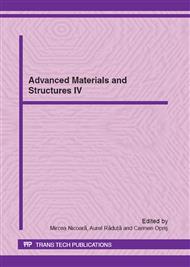p.199
p.205
p.211
p.219
p.226
p.232
p.238
p.244
p.250
Experimental Study of Bimaterial Shear Strength and Strain Concentrations by Iosipescu Based Test Using Digital Image Correlation System
Abstract:
Adhesive bonding of two different materials appears in many modern engineering applications, e.g.: airplanes, boats, cars etc. In many practical problems the adhesive bonding is subjected to shear loading. Therefore this is important to investigate the whole deformation process of the considered type of joints under monotonic loading, to get information about the shear strength and strain concentrations. Such concentrations lead to microdefects initiation and their further coalescence to create a main crack. The unstable crack propagation leads to final failure of the adhesive joint. The Digital Image Correlation (DIC) System - ARAMIS allows for constant monitoring of the deformation state up to the final failure. The tests were performed for bi-material specimens made of adhesively bonded PMMA and aluminum strips (Fig.1) and for pure PMMA and pure aluminum specimens. Additionally, two strain gauges on each homogeneous specimen and four on the bimaterial ones are used for strains estimations. The four point bending Iosipescu tests were performed using MTS machine with constant speed. In the first method (DIC) the ARAMIS system recorded a displacement distribution in samples with frequency 1Hz. In the second method the strains were recorded by the strain gauges - using analog output channels of the HOTTINGER data Acquisition System - MGCPlus, the current value of the load using analog output channel of the MTS machine was recorded too. The load-displacement curves were obtained for the whole deformation process and the shear strength of the joints was estimated. The energy absorption of the joints was calculated.
Info:
Periodical:
Pages:
226-231
Citation:
Online since:
May 2012
Authors:
Keywords:
Price:
Сopyright:
© 2012 Trans Tech Publications Ltd. All Rights Reserved
Share:
Citation:


